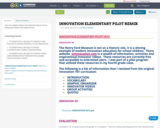
THIS IS A REMIX FROM THE INNOVATION 101 PILOT PROGRAM FROM THE HENRY FORD.
- Subject:
- Social Science
- Material Type:
- Activity/Lab
- Homework/Assignment
- Lecture
- Date Added:
- 09/25/2012

THIS IS A REMIX FROM THE INNOVATION 101 PILOT PROGRAM FROM THE HENRY FORD.
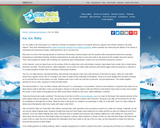
This article describes two hands-on lessons to teach elementary and middle school students about ice, glaciers, and climate change in the polar regions.
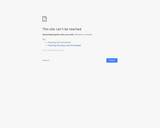
This nonfiction article, written for students in grades 4-5, explores the ways in which glaciers shape the Earth's land. Modified versions are available for students in younger grades.
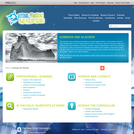
This issue of the free online magazine, Beyond Penguins and Polar Bears, contains content knowledge and instructional resources about icebergs and glaciers and the scientific principles of density and buoyancy.
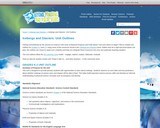
This article assembles free resources from the Icebergs and Glaciers issue of the Beyond Penguins and Polar Bears cyberzine into a unit outline based on the 5E learning cycle framework. Outlines are provided for Grades K-2 and 3-5.

This article features children's literature about icebergs and glaciers.
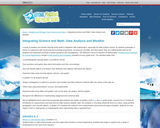
This article discusses how the study of weather can meet the NCTM Data Analysis and Probability standard. Links to lessons for grades K-2 and 3-5 are provided.
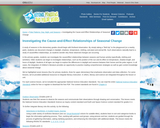
This article highlights seven science lessons that teach elementary students about seasonal change. Suggestions for integrating literacy and science include two lessons that use informational text and cause and effect relationships.
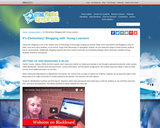
This article describes how primary school teachers and their school technology specialist use classroom blogging to engage children in reading and writing.
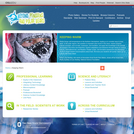
This issue of the free online magazine, Beyond Penguins and Polar Bears, examines physical science concepts, such as heat, conductors, and insulation, and applies this knowledge to the animals and people in the Arctic and Antarctica.
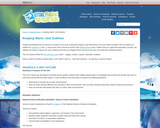
This article assembles free resources from the Keeping Warm issue of the Beyond Penguins and Polar Bears cyberzine into a unit outline based on the 5E learning cycle framework. Outlines are provided for grades K-2 and 3-5.
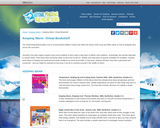
This article features children's literature about heat, temperature, and adaptations and behaviors that allow animals and people to survive in the polar regions.
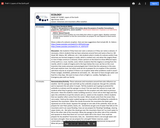
In this lesson, students will learn about how volcanoes and mountains affect weather. Includes video links, discussion, demonstration, and an additional activity.
NGSS: K-ESS3-2
Time: 50 minutes
Materials: umbrella and sponge.
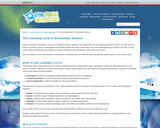
This article provides an overview of learning cycles and how they can enhance student learning in science.
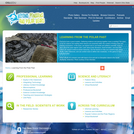
This issue of the free online magazine, Beyond Penguins and Polar Bears, explore how to use fossils and artifacts (scientific clues) to learn about the polar regions' past. Targeted literacy skills include making inferences, and using context clues to define new vocabulary.
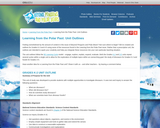
This article assembles free resources from the Learning from the Polar Past issue of the Beyond Penguins and Polar Bears cyberzine into a unit outline based on the 5E learning cycle framework. Outlines are provided for Grades K-2 and 3-5.
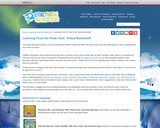
This article highlights children's literature about fossils, dinosaurs, archaeology, and paleontology for use in the elementary classroom.
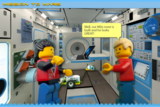
This teaching unit was created to provide any classroom teacher with all the tools necessary to help her students learn and apply engineering and design skills and computer science concepts in the context of a Next Generation Science Standards (NGSS) style investigation.
Students learn in the context of a story line that winds throughout each of the five workshops in the unit. Each workshop introduces a new phase of their ongoing “Mission to Mars.” Every workshop begins with a video that provides students an overview of the problem or situation encountered by the Mars Explorers (represented in the online modules by two Lego™ mini-figures and called Max and Mia to match the WeDo software). The curriculum then walks the students through a series of online learning modules that help them learn about a piece of technology or a new concept they’ll need to build a model from Lego WeDo™ kits and how they can solve real life problems using engineering practices.
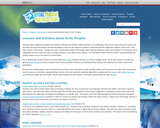
This article highlights lessons and activities for elementary students about the people and cultures of the Arctic region.
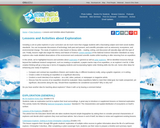
This article includes integrated lessons, activities, and ideas for teaching about exploration and polar explorers in the elementary classroom.